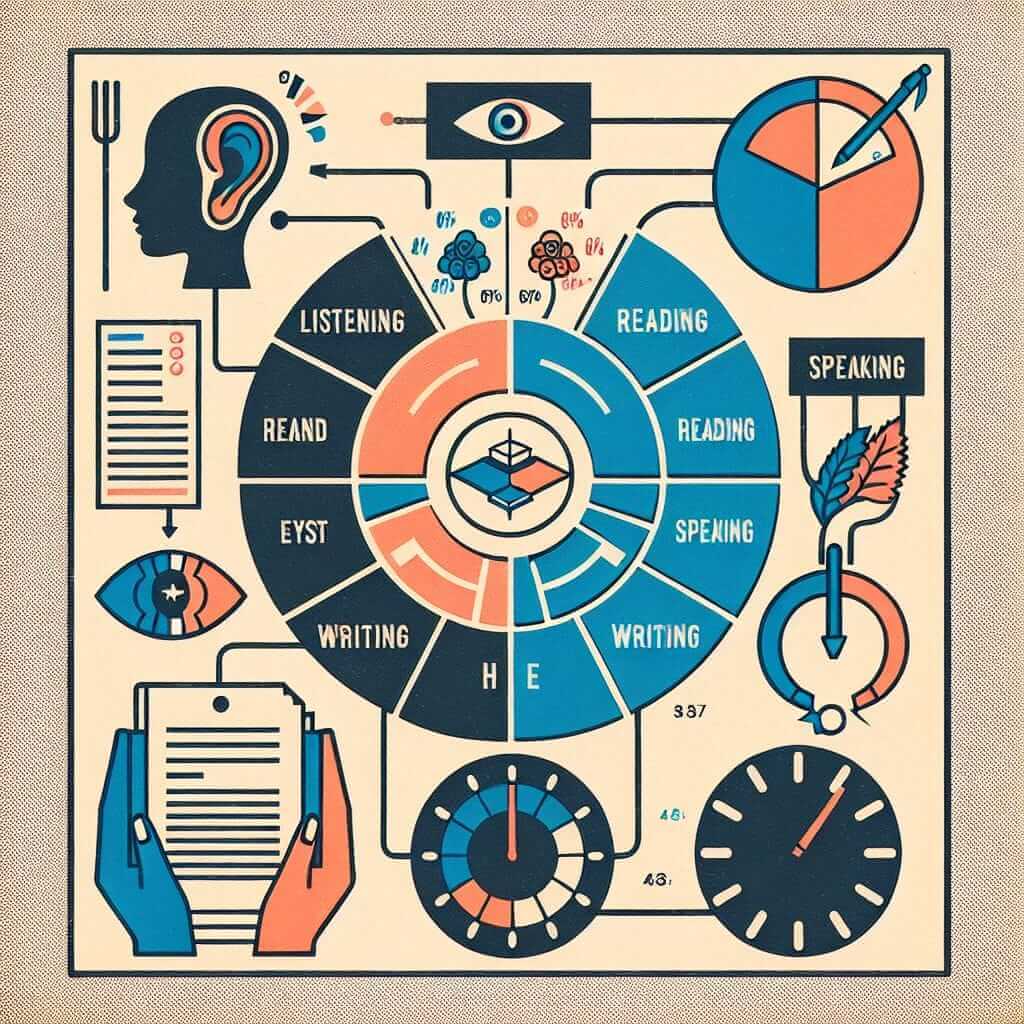Introduction
Are you planning to take the IELTS exam? Understanding the IELTS format is crucial for effective preparation and achieving your desired band score. As an IELTS instructor with over 20 years of experience, I’ve witnessed firsthand how a strong grasp of the test format can significantly boost a candidate’s confidence and performance.
This comprehensive guide will delve into the intricacies of the IELTS test format, providing you with the knowledge and insights you need to excel.
Understanding the IELTS Exam Format
The International English Language Testing System (IELTS) assesses your English language proficiency across four key skills: Listening, Reading, Writing, and Speaking. The exam has two modules:
- IELTS Academic: Designed for individuals planning to pursue higher education or professional registration in an English-speaking environment.
- IELTS General Training: Suitable for those migrating to an English-speaking country (Australia, Canada, New Zealand, UK) or seeking work experience or training programs.
While the Speaking and Listening tests are identical for both modules, the Reading and Writing sections differ.

IELTS Test Format Breakdown
Let’s break down the IELTS test format section by section:
1. Listening
Duration: 30 minutes (plus 10 minutes for transferring answers)
Number of Sections: 4
Question Types: Multiple choice, matching, plan/map/diagram labeling, form completion, note completion, sentence completion, short-answer questions, summary completion
The Listening test assesses your ability to understand spoken English in various contexts, including everyday conversations, academic lectures, and social situations.
2. Reading
Duration: 60 minutes
Number of Sections: 3 (Academic) or 3 (General Training)
Question Types: Multiple choice, identifying information (True/False/Not Given), matching headings, matching information, sentence completion, summary completion, note completion, flow-chart completion, short-answer questions
The Reading test evaluates your comprehension skills, focusing on your ability to understand the main ideas, specific details, inferences, and the writer’s purpose or opinion.
3. Writing
Duration: 60 minutes
Number of Tasks: 2 (Academic) or 2 (General Training)
Academic Writing Tasks:
- Task 1: Describe, summarise, or explain visual information (graph, table, chart, diagram, process).
- Task 2: Write an essay in response to a given point of view, argument, or problem.
General Training Writing Tasks:
- Task 1: Write a letter in response to a given situation.
- Task 2: Write an essay in response to a given point of view, argument, or problem.
The Writing test assesses your ability to communicate ideas in written English, focusing on your grammar, vocabulary, coherence, and task achievement.
4. Speaking
Duration: 11-14 minutes
Number of Parts: 3
- Part 1: Introduction and interview (4-5 minutes).
- Part 2: Individual long turn (3-4 minutes). You will be given a topic card and have one minute to prepare a spoken response lasting 1-2 minutes.
- Part 3: Two-way discussion (4-5 minutes). The examiner will ask you more in-depth questions related to the topic in Part 2.
The Speaking test evaluates your ability to communicate effectively in spoken English, focusing on your fluency, pronunciation, grammar, vocabulary, and coherence.
IELTS Test Format: Key Considerations
- The total test duration for all four sections is 2 hours and 45 minutes.
- The Listening, Reading, and Writing tests are conducted on the same day with no breaks in between.
- The Speaking test may be scheduled on the same day or up to a week before or after the other tests.
- The IELTS test is scored on a band scale of 0-9, with 9 being the highest.
Tips for Success in the IELTS Exam
- Familiarize yourself with the test format: Understand the structure, question types, and time limits for each section.
- Practice regularly: Use practice tests and sample questions to simulate exam conditions and identify your strengths and weaknesses.
- Develop your English language skills: Focus on improving your vocabulary, grammar, pronunciation, and comprehension skills.
- Seek feedback from experts: An experienced IELTS instructor can provide valuable guidance and feedback on your progress.
Conclusion
Mastering the IELTS format is an essential step towards achieving success in this globally recognized English language proficiency test. By understanding the structure, question types, and time constraints of each section, you can approach the exam with greater confidence and maximize your chances of obtaining your desired band score. Remember, consistent practice and targeted preparation are key to unlocking your full potential in the IELTS exam.